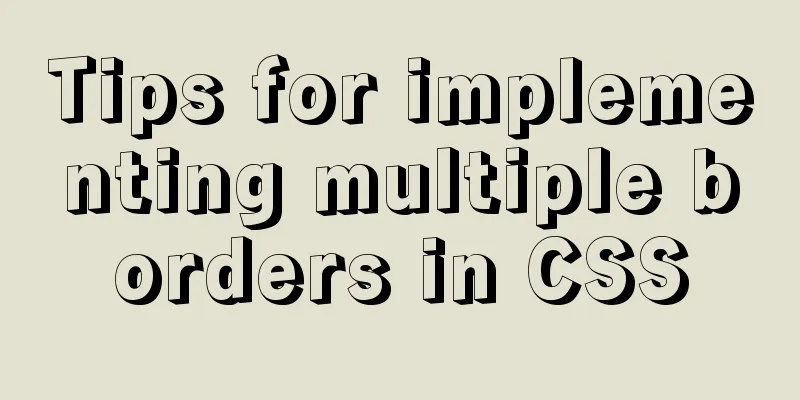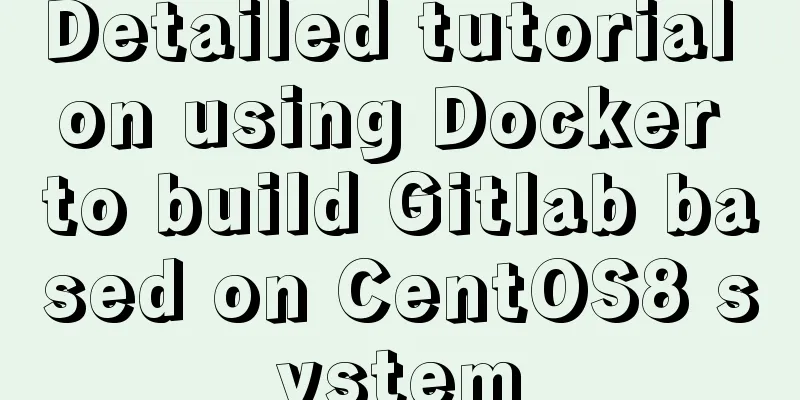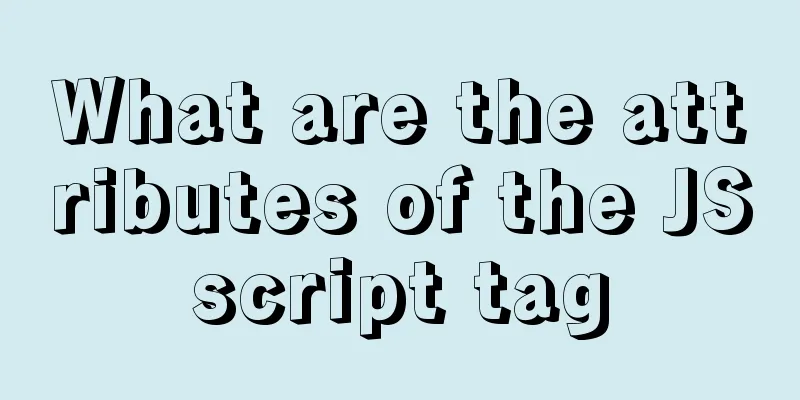Detailed explanation of how to use the vue3 Teleport instant movement function

|
The use of vue3 Teleport instant movement function is for your reference. The specific content is as follows Teleport is usually translated as instant teleportation component, which is actually difficult to understand. I understand it as "independent component" It can mount the components you write to any DOM you want, so it is very free and independent. Take an example: Writing a pop-up component
<template>
<teleport to="#modal">
<div id="center" v-if="isOpen">
<h2><slot>this is a modal</slot></h2>
<button @click="buttonClick">Close</button>
</div>
</teleport>
</template>
<script lang="ts">
export default {
props: {
isOpen: Boolean,
},
emits:
'close-modal': null
},
setup(props, context) {
const buttonClick = () => {
context.emit('close-modal')
}
return {
buttonClick
}
}
}
</script>
<style>
#center {
width: 200px;
height: 200px;
border: 2px solid black;
background: white;
position: fixed;
left: 50%;
top: 50%;
margin-left: -100px;
margin-top: -100px;
}
</style>When used in app.vue, it is the same as calling a normal component.
<template>
<div id="app">
<img alt="Vue logo" src="./assets/logo.png">
<HelloWorld msg="Welcome to Your Vue.js App"/>
<HooksDemo></HooksDemo>
<button @click="openModal">Open Modal</button><br/>
<modal :isOpen="modalIsOpen" @close-modal="onModalClose"> My Modal !!!!</modal>
</div>
</template>
<script>
import HelloWorld from './components/HelloWorld.vue'
import HooksDemo from './components/HooksDemo.vue'
import Modal from './components/Modal.vue'
import{ref} from 'vue'
export default {
name: 'App',
components:
HelloWorld,
HooksDemo,
Modal
},
setup() {
const modalIsOpen = ref(false)
const openModal = () => {
modalIsOpen.value = true
}
const onModalClose = () => {
modalIsOpen.value = false
}
return {
modalIsOpen,
openModal,
onModalClose
}
}
}
</script>
<style>
#app {
font-family: Avenir, Helvetica, Arial, sans-serif;
-webkit-font-smoothing: antialiased;
-moz-osx-font-smoothing: grayscale;
text-align: center;
color: #2c3e50;
margin-top: 60px;
}
</style>If used in the app.vue file, the modal is under the DOM node of the app, and the DOM structure and css of the parent node will affect the modal, thus causing problems 1. Modal is wrapped in other components and is easily interfered with Teleport can render modal components to any external DOM you want to render, without having to nest them in #app, so that they do not interfere with each other. You can think of Teleport as a portal to transmit your components to any place. When you use it, the to attribute can determine the DOM node you want to mount it under. <template> <teleport to="#modal"> <div id="center"> <h2>better</h2> </div> </teleport> </template> Add a node in index.html under the public folder <!DOCTYPE html> <html lang="en"> <head> <meta charset="utf-8"> <meta http-equiv="X-UA-Compatible" content="IE=edge"> <meta name="viewport" content="width=device-width,initial-scale=1.0"> <link rel="icon" href="<%= BASE_URL %>favicon.ico" > <title><%= htmlWebpackPlugin.options.title %></title> </head> <body> <noscript> <strong>We're sorry but <%= htmlWebpackPlugin.options.title %> doesn't work properly without JavaScript enabled. Please enable it to continue.</strong> </noscript> <div id="app"></div> <div id="modal"></div> <!-- built files will be auto injected --> </body> </html> In this way, you can see that the modal component is not mounted under the app and is no longer affected by the app component.
The above is the full content of this article. I hope it will be helpful for everyone’s study. I also hope that everyone will support 123WORDPRESS.COM. You may also be interested in:
|
<<: How to install and use Server-U 14 version
>>: mysql 5.7.18 winx64 password change
Recommend
Summary of various methods of MySQL data recovery
Table of contents 1. Introduction 2. Direct recov...
Use of filter() array filter in JS
Table of contents 1. Introduction 2. Introduction...
Detailed explanation of writing and using Makefile under Linux
Table of contents Makefile Makefile naming and ru...
Why the explain command may modify MySQL data
If someone asked you whether running EXPLAIN on a...
Set the width of the table to be fixed so that it does not change with the text
After setting the table width in the page to width...
Detailed explanation of the use of MySQL mysqldump
1. Introduction to mysqldump mysqldump is a logic...
Application scenarios and design methods of MySQL table and database sharding
Many friends have asked in forums and message are...
CSS float (float, clear) popular explanation and experience sharing
I came into contact with CSS a long time ago, but...
Native JS to achieve sliding button effect
The specific code of the sliding button made with...
js realizes packaging multiple pictures into zip
Table of contents 1. Import files 2. HTML page 3....
About the problem of running git programs in jenkins deployed by docker
1. First, an error message is reported when assoc...
Solution to Tomcat server failing to open tomcat7w.exe
I encountered a little problem when configuring t...
Ubuntu 20.04 Best Configuration Guide (Newbie Essential)
1. System Configuration 1. Turn off sudo password...
MySQL multi-instance configuration application scenario
Table of contents MySQL multiple instances Multi-...
Detailed discussion on the issue of mysqldump data export
1. An error (1064) is reported when using mysqldu...










